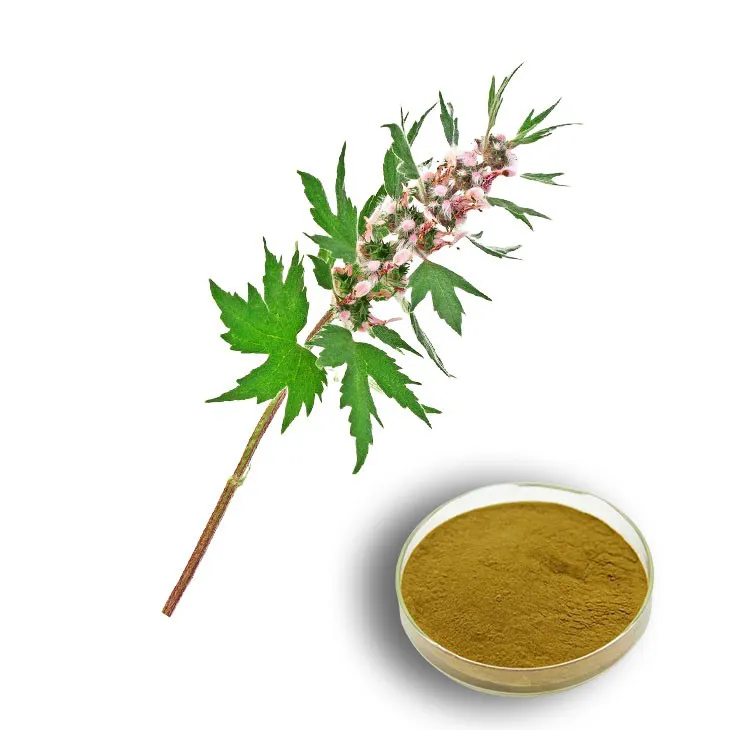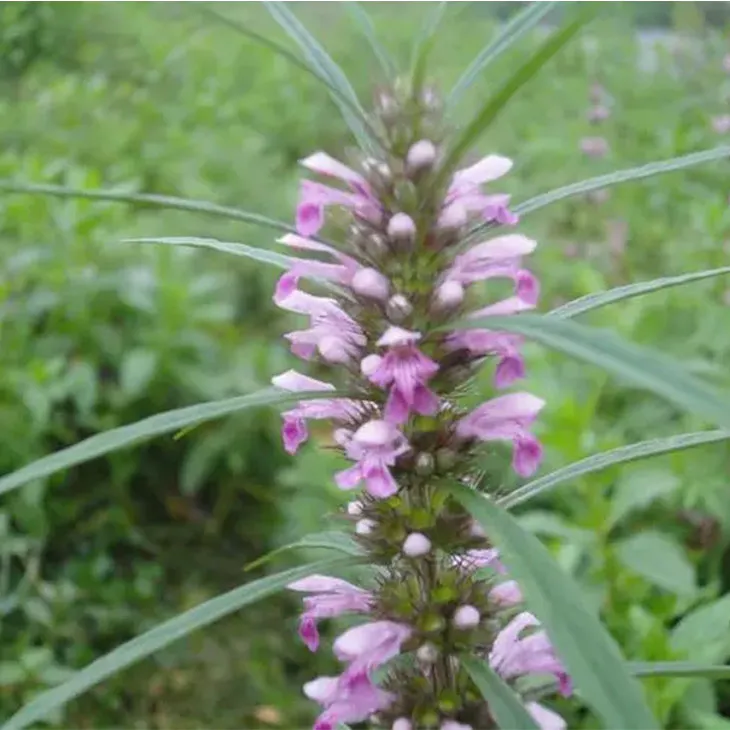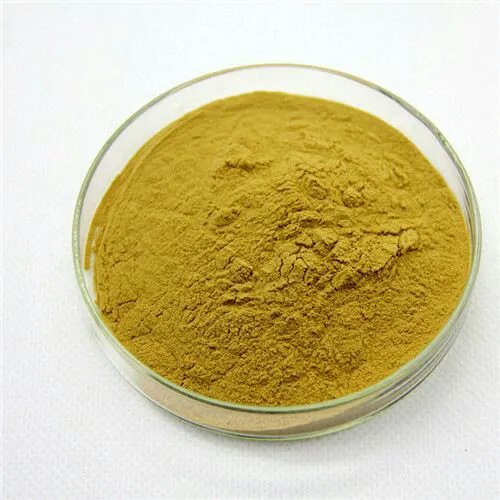- 0086-571-85302990
- sales@greenskybio.com
Motherwort Extract: China vs. the United States
2024-11-29

1. Introduction
Motherwort, known as "Yimucao" in Chinese, has been an important plant in traditional medicine systems. China, with its millennia - old traditional medicine heritage, has a long - standing relationship with Motherwort Extract. For centuries, it has been incorporated into traditional prescriptions. In the United States, a global leader in modern biomedical research, Motherwort Extract is also being studied, albeit from a different perspective. This article aims to analyze how cultural, scientific, and regulatory factors influence the development of Motherwort Extract in both countries.

2. Motherwort in Chinese Traditional Medicine
2.1 Historical Use
In China, the use of motherwort can be traced back to ancient times. It has been a crucial component in traditional prescriptions for promoting blood circulation and regulating menstruation. Traditional Chinese medicine (TCM) practitioners have long recognized its value in treating various gynecological disorders. For example, in ancient medical texts, there are numerous records of using motherwort - based formulas to relieve menstrual pain, regulate menstrual cycles, and improve postpartum recovery.
2.2 Holistic Health Benefits
Chinese research on motherwort extract often emphasizes its holistic health benefits. It is not just seen as a treatment for a single ailment but as a part of maintaining overall well - being. Motherwort is believed to have a regulatory effect on the body's internal environment. It can help balance the qi (vital energy) and blood in the body according to TCM theory. This holistic view is deeply rooted in Chinese culture, which values the harmony and balance of the body, mind, and environment.
2.3 Traditional Preparation Methods
Traditional preparation methods of motherwort extract in China are diverse. One common method is decoction, where the dried motherwort is boiled in water for a certain period. This process extracts the active components of motherwort into the water, which is then consumed as a medicinal tea. Another method is alcohol extraction, which is often used to produce more concentrated extracts for external or internal use in certain cases. These traditional methods have been passed down through generations and are still in use today, although modern pharmaceutical techniques are also being gradually incorporated.
3. Motherwort in the United States' Biomedical Research
3.1 Modern Scientific Tools
In the United States, researchers use advanced scientific tools to study motherwort extract. Techniques such as high - performance liquid chromatography (HPLC) and mass spectrometry (MS) are commonly employed to analyze the chemical composition of motherwort extract. These tools allow for the identification and quantification of various bioactive compounds present in the extract. For example, through HPLC, researchers can separate and detect different alkaloids, flavonoids, and other compounds in motherwort, which helps in understanding its pharmacological properties.
3.2 Isolating and Understanding Specific Compounds
The focus of research in the United States is often on isolating and understanding specific bioactive compounds. Instead of looking at the overall extract as in the holistic approach of Chinese medicine, American researchers aim to determine which individual compounds are responsible for certain biological activities. For instance, they may study a particular alkaloid in motherwort to see if it has anti - inflammatory or antioxidant properties. This reductionist approach is characteristic of modern Western biomedical research, which attempts to break down complex biological systems into their individual components for in - depth study.
3.3 Potential for New Drug Development
The research on motherwort extract in the United States also has an eye on new drug development. If specific bioactive compounds with promising pharmacological activities are identified, they may be further developed into new drugs. This is in line with the American pharmaceutical industry's model of drug discovery and development. For example, if a compound in motherwort extract shows potential in treating a particular disease, such as cardiovascular diseases, it could be the starting point for a new drug development project.
4. Cultural Factors
4.1 Chinese Cultural Influence on Motherwort Research
Chinese culture has a profound influence on the research and use of motherwort extract. The concept of holistic health in TCM, which views the body as an interconnected whole, guides the study of motherwort. In Chinese culture, there is also a long - standing tradition of using natural herbs for medicinal purposes, and motherwort is an important part of this herbal medicine heritage. People's trust in traditional medicine and the cultural value placed on maintaining harmony with nature contribute to the continued exploration of motherwort's health benefits.
4.2 American Cultural Influence on Motherwort Research
In the United States, the culture of scientific innovation and the pursuit of evidence - based medicine shape the research on motherwort extract. There is a greater emphasis on using scientific methods to prove the efficacy and safety of herbal products. American culture also values individualism, which is reflected in the research approach of isolating specific compounds. The goal is often to develop targeted therapies rather than relying on holistic approaches.
5. Scientific Factors
5.1 Research Methodologies
The research methodologies in China and the United States differ significantly. In China, traditional research methods in TCM, such as clinical observation and experience - based medicine, are still important. However, modern scientific research methods are also being increasingly integrated. In the United States, the research is mainly based on modern biomedical research paradigms, including in vitro and in vivo experiments, and clinical trials following strict scientific protocols.
5.2 Collaboration and Exchange
There is a growing trend of collaboration and exchange between Chinese and American researchers in the field of motherwort extract research. Chinese researchers can learn from American advanced scientific techniques, while American researchers can gain insights from Chinese traditional medicine knowledge. For example, joint research projects may involve using American - developed analytical tools to study the chemical composition of motherwort extract in Chinese traditional prescriptions, and then using Chinese clinical experience to guide the exploration of potential therapeutic applications.6. Regulatory Factors
6.1 Chinese Regulatory Environment
In China, the regulatory environment for traditional medicine, including motherwort extract, is complex. There are regulations governing the cultivation, extraction, and quality control of herbal products. Traditional Chinese medicine is recognized as an important part of the national medical system, and efforts are being made to modernize and standardize its production and use. For example, the Chinese Pharmacopoeia sets standards for the quality of motherwort and its extracts, which helps ensure the safety and efficacy of products in the market.
6.2 American Regulatory Environment
In the United States, the regulatory environment for herbal products, including motherwort extract, is more stringent. Herbal products are often classified as dietary supplements, and there are strict regulations regarding their labeling, safety, and marketing claims. Before a product can be marketed as a drug, it needs to go through a long and expensive drug development process, including pre - clinical and clinical trials. This regulatory environment affects the way motherwort extract is studied and commercialized in the United States.7. Conclusion
In conclusion, the development of motherwort extract in China and the United States is influenced by a variety of factors. Cultural factors play a significant role in shaping the research perspectives, with China's holistic approach rooted in traditional medicine culture and the United States' reductionist approach influenced by its scientific and cultural values. Scientific factors, such as research methodologies and collaboration opportunities, also impact the progress of motherwort extract research in both countries. Regulatory factors further determine how motherwort extract can be developed and commercialized. As the world becomes more globalized, there is an increasing opportunity for cross - cultural and cross - scientific exchanges in the study of motherwort extract, which may lead to new insights and potential applications in the future.
FAQ:
1. What are the main traditional uses of motherwort extract in China?
In China, motherwort extract has been mainly used in traditional prescriptions for promoting blood circulation and regulating menstruation. It is often part of the traditional medical approach to deal with various gynecological issues related to blood stasis and menstrual irregularities.
2. How does the United States conduct research on motherwort extract?
The United States, as a leader in modern biomedical research, uses advanced scientific tools to study motherwort extract. The focus is on isolating and understanding specific bioactive compounds within the extract. This is different from China's more holistic approach and aims to precisely define the chemical components responsible for potential health benefits.
3. What cultural factors affect the development of motherwort extract in China?
China's long - standing traditional medicine heritage is a significant cultural factor. There is a deep - rooted belief in the holistic concept of health in traditional Chinese medicine. This leads to the exploration of motherwort extract in the context of overall health improvement and balance, considering its role in promoting blood circulation and regulating menstruation as part of a comprehensive health - maintaining system.
4. How do regulatory factors differ between China and the United States regarding motherwort extract?
In China, regulatory factors are often influenced by traditional medicine concepts and a long - established system for traditional medicine. There may be more acceptance and specific regulations related to traditional uses. In the United States, the regulatory system is mainly based on modern scientific evidence. For motherwort extract, it requires more strict scientific proof of safety and efficacy before it can be widely used in medical or health - related products.
5. What are the potential benefits of the different research approaches in China and the United States?
The holistic approach in China may lead to a comprehensive understanding of how motherwort extract interacts with the human body in a more natural and overall context. It may uncover benefits that are related to the complex system of the body as a whole. The United States' approach of isolating specific bioactive compounds can lead to more targeted drug development or the creation of more precisely formulated health products, as it clearly defines the active substances and their functions.
Related literature
- Title: Motherwort in Traditional Chinese Medicine: A Comprehensive Review"
- Title: "Modern Biomedical Research on Botanical Extracts: The Case of Motherwort in the United States"
- Title: "Cultural Influence on Herbal Medicine Research: Motherwort Extract as an Example"
- ▶ Hesperidin
- ▶ citrus bioflavonoids
- ▶ plant extract
- ▶ lycopene
- ▶ Diosmin
- ▶ Grape seed extract
- ▶ Sea buckthorn Juice Powder
- ▶ Beetroot powder
- ▶ Hops Extract
- ▶ Artichoke Extract
- ▶ Reishi mushroom extract
- ▶ Astaxanthin
- ▶ Green Tea Extract
- ▶ Curcumin Extract
- ▶ Horse Chestnut Extract
- ▶ Other Problems
- ▶ Boswellia Serrata Extract
- ▶ Resveratrol Extract
- ▶ Marigold Extract
- ▶ Grape Leaf Extract
- ▶ blog3
- ▶ blog4
-
Chinese aguaje extract powder manufacturers.
2024-11-29
-
Honeysuckle pollen of the best quality.
2024-11-29
-
Chinese Senna Leaf Extract Suppliers.
2024-11-29
-
Organic Dandelion Root Extract, Australia.
2024-11-29
-
The best bitter gourd extract in 2024.
2024-11-29
-
The best baicalin in nature.
2024-11-29
-
Chinese lily extract manufacturers.
2024-11-29
-
Nature's best β - carotene.
2024-11-29
-
Plantain extract
2024-11-29
-
Eucommia Ulmoides Extract
2024-11-29
-
Bitter Melon Extract
2024-11-29
-
Dandelion Leaf Extract
2024-11-29
-
Hesperidin
2024-11-29
-
Horse Chestnut Extract
2024-11-29
-
Coix Seed Extract
2024-11-29
-
melatonin extract
2024-11-29
-
Tinospora cordifolia extract
2024-11-29
-
Selenium yeast
2024-11-29





















